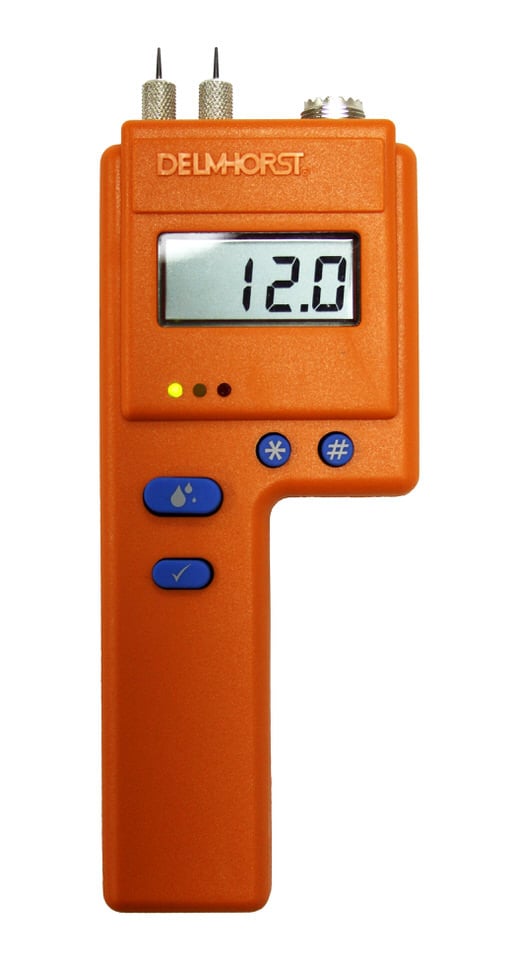Leading 10 Benefits of Using a Moisture Meter for Exact Measurements in your house
Leading 10 Benefits of Using a Moisture Meter for Exact Measurements in your house
Blog Article
Explore the World of Moisture Meters: Everything You Required to Know
In the realm of dampness meters lies a globe of precision and functionality that frequently goes undetected. Understanding just how moisture meters operate, the various kinds offered, and their varied uses can drop light on their relevance in guaranteeing top quality and efficiency.
Just How Moisture Meters Work
Moisture meters operate by gauging the electrical conductivity or capacitance of products to determine the wetness web content present. These meters are very useful tools across numerous industries, including construction, woodworking, and agriculture. By utilizing different methods such as pinless or pin-type modern technology, moisture meters offer precise analyses that assist specialists make educated choices.
Pin-type wetness meters work by placing the sharp pins into the material being tested. On the various other hand, pinless dampness meters make use of electro-magnetic signals to scan a larger area without triggering any type of damage to the product's surface area.
Despite the approach made use of, dampness meters play a crucial duty in protecting against concerns such as mold and mildew growth, structural damages, or item problems brought on by excess moisture. Recognizing exactly how these meters work is essential for making certain the top quality and stability of materials in different applications.
Types of Moisture Meters
Offered the important function moisture meters play in different industries, it is vital to recognize the different types readily available to experts for accurately analyzing wetness degrees - Moisture Meter. There are mostly two primary types of dampness meters: pin-type and pinless dampness meters

On the other hand, pinless wetness meters utilize electromagnetic sensing unit plates to scan a bigger area of the product without causing any kind of damage. This kind appropriates for promptly scanning huge areas and is generally utilized for floor covering, walls, and ceilings. Pinless meters are hassle-free for taking readings on completed surface areas without leaving any type of noticeable marks.
Both sorts of moisture meters have their advantages and are selected based on the specific demands of the job handy. Comprehending the differences in between these types is critical for professionals to make exact moisture evaluations.
Applications Throughout Industries
Building specialists depend on moisture meters to examine the moisture degrees in building products like concrete, wood, and drywall, which is essential for keeping structural honesty and avoiding concerns like rot or mold. The floor covering industry utilizes dampness meters to measure the wetness content in subfloors before mounting various flooring treatments, avoiding pricey damages due to excess dampness. In the food market, dampness meters are used to keep an eye on and regulate moisture levels in products such as grains, nuts, and dried out fruits to keep freshness and high quality.
Tips for Making Use Of Moisture Meters
Utilize the dampness meter's calibration settings to guarantee exact analyses when determining the moisture content Source in numerous products. Calibration is vital for the correct functioning of a moisture meter. Before each use, it is suggested to examine and adjust the calibration settings according to the specific material being evaluated. Furthermore, ensure the meter is readied to the proper dampness range for the product you are measuring to obtain the most precise results.
When using a pin-type moisture meter, put the pins to the ideal deepness suggested for the material being tested. This ensures that the moisture analyses are drawn from the right depth within the material, giving an extra precise representation of its dampness web content. For pinless wetness meters, keep in mind to maintain correct contact with the material's surface area to obtain reputable readings.
On a regular basis examine and change the batteries in your moisture meter to stop unreliable readings as a result of low power. When not in usage to prolong its life-span and preserve its precision, Store the meter in a risk-free and dry place. By adhering to these tips, you can make the most of the efficiency of your moisture meter and obtain exact moisture web content dimensions throughout different materials.
Upkeep and Calibration
To guarantee the precision of moisture content dimensions, normal upkeep and calibration of the dampness meter are essential actions in its correct performance. Calibration readjusts the dampness meter to make sure that it supplies consistent and dependable results.
Calibration must be performed periodically, especially if the wetness meter is used regularly or in important applications where accurate dimensions are needed. By maintaining and adjusting the moisture meter consistently, customers can trust the precision of the moisture material measurements gotten.
Verdict

To conclude, moisture meters play an important function in different industries by precisely determining the wetness material of materials. Comprehending exactly how these devices work, the different types readily available, and correct maintenance and calibration are essential for obtaining trustworthy outcomes. Whether in manufacturing, agriculture, or construction, making use of wetness meters assists make sure quality assurance and performance in procedures.

In verdict, wetness meters play a vital function in various sectors by precisely determining the moisture content of products.
Report this page